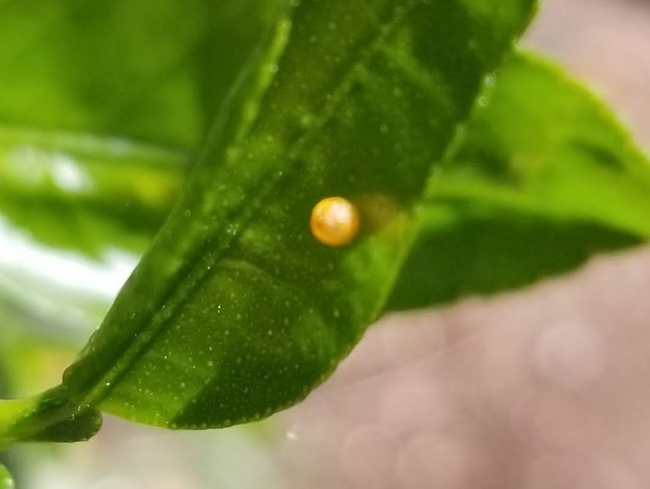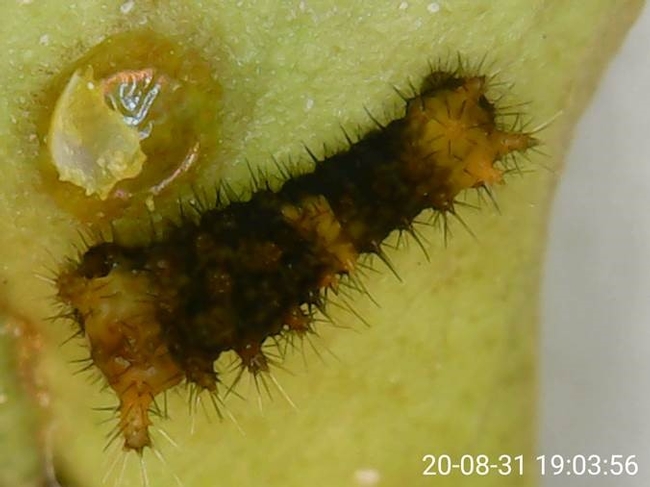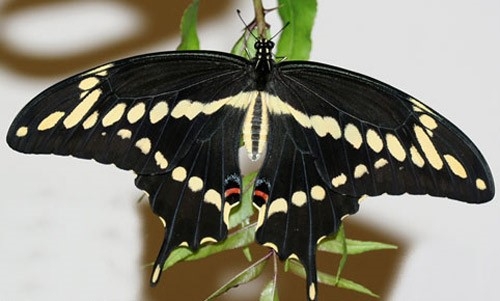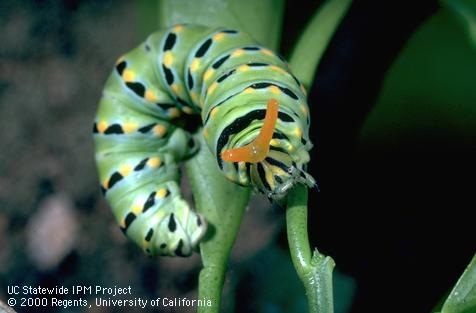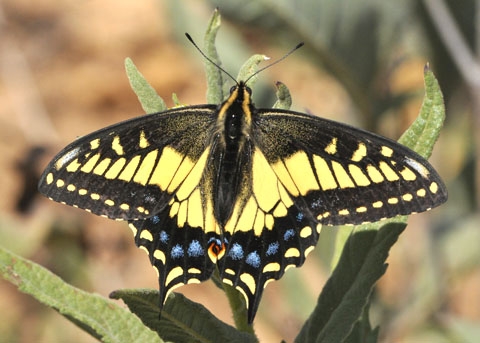
Posts Tagged: insect
Got Insects?
We were recently bird watching on one of the sky islands in southern Arizona. It was pretty impressive, the diversity of birds and BRIGHT colors compared to those in the Ventura area. Arizona locals, though, were saying numbers were way down. Why? Less and fewer berries and insects to feed on.
Fewer berries, because of drought has really hit the area. But fewer insects? Recent research indicates we have lost more than 40% of our insects in the past 20 years. This decline may have been first noted by some Germans who realized that they didn't need to clean their windshields any longer. This would be a sign of rejoicing, yes? But there are severe consequences, such as less food for birds.
Entomologists estimate that the services insects provide exceed some lots of billions of dollars a year. Other factors in their performance besides bird food, is pest control, pollination and manure management. Insects provide a lot more services than these, like improved soil fertility, nutrient cycling and decomposition. That billions of dollar estimate is probably way under estimated. Way under.
In Worldwide Decline of the Entomofauna: A Review of its Drivers, Sanchez-Bayo and Wyckhuys highlight some of the issues:
*Over 40% of insect species are threatened with extinction.
*Lepidoptera, Hymenoptera and dung beetles (Coleoptera) are the taxa most affected.
*Four aquatic taxa are imperiled and have already lost a large proportion of species
*Habitat loss by conversion to intensive agriculture is the main driver of the declines.
*Agro-chemical pollutants, invasive species and climate change are additional causes
And they have these conclusions:
The main drivers of species declines appear to be in order of importance: i) habitat loss and conversion to intensive agriculture and urbanisation; ii) pollution, mainly that by synthetic pesticides and fertilisers; iii) biological factors, including pathogens and introduced species; and iv) climate change. The latter factor is particularly important in tropical regions, but only affects a minority of species in colder climes and mountain settings of temperate zones. A rethinking of current agricultural practices, in particular a serious reduction in pesticide usage and its substitution with more sustainable, ecologically-based practices, is urgently needed to slow or reverse current trends, allow the recovery of declining insect populations and safeguard the vital ecosystem services they provide. In addition, effective remediation technologies should be applied to clean polluted waters in both agricultural and urban environments.
Now what are the solutions?

hover fly avocado flower
What's That Egg?
I recently got a request for the id of an insect egg from a Santa Barbara PCA. I didnt have a clue, so sent it on to David Haviland, a CE entomolgy advisor in Kern Co. Below is the inquiry and responses from the PCA and David:
Hello Ben,
I've noticed a small orange orb on citrus leaves while examining them for other pests (leafminer in one photo) and wonder if you have any idea what they are?
They aren't totally wide spread but wondering if you could give me a clue.
All the best,
John
John
Interesting since it's a solitary egg. Maybe a spider egg? Lets see what a real entomologist says, David, Monique?
Ben
And the response from Haviland:
John.
There are lots of predators that love to eat eggs, just as there are lots of parasitoids that love to parasitize them. For that reason, most insects only stay in the egg stage for a few days. This is especially true for insects that lay their eggs out in the open (as opposed to somewhere protected inside a leaf). My guess is that if you stick the leaf in a small plastic container in the office that something will come out in a few days. As eggs develop and get close to hatching, it is common for them to start getting darker in color, and oftentimes you can start seeing eyespots, mandibles, or other sclerotized parts of what's inside before it actually hatches.
Good luck with your science experiment.
David
And from John:
David, Ben and all that took a look at my orange insect egg,
Thanks for your input! Below are photos of what emerged which looks like some type of caterpillar to me. Please let me know what you think it could be.
And from Haviland:
Excellent job John. Get yourself a cigar because you are now the proud father of a first-instar giant swallowtail. This is a very large, and one of the most beautiful swallowtails in southern California. The eggs laid right now will become adults next summer.
There is dueling nomenclature on this species, with some considering giant swallowtails across the US to be one species (Papilio cresphontes), with another group believing that giant swallowtails in the east and west are different, with the ones in the west named Heraclides rumiko. Below are profiles of giant swallowtails from the best-known butterfly sites. The first link shows what the caterpillar will look like as it grows. The second link shows its host range. The third has lots of pictures of adults. Great find. –David
http://www.raisingbutterflies.org/giant-swallowtail/
https://www.butterfliesandmoths.org/species/Papilio-cresphontes
https://www.butterfliesofamerica.com/L/heraclides_rumiko.htm
Adult giant swallowtail, Papilio cresphontes Cramer, dorsal view. Photograph by Donald Hall, Entomology and Nematology Department, University of Florida
There are many butterfly species that visit citrus orchards, especially during bloom and when flowering cover crops are present. One of these species, the anise swallowtail, commonly uses citrus trees on the central coast as a host.
California orangedog or Anise swallowtail larvae
Anise swallowtail adult. Santiago Truck Trail, Orange County, CA. 4/25/09. © Peter J. Bryant
However, on some occasions, especially in southern California, there is a second swallowtail species that also uses citrus as a host - the giant swallowtail.
Monarch Butterfly Funding Available
CONTACT: Anita Brown (530) 792-5644
Assistance Available for California Producers to Aid Declining Monarch Butterfly
USDA Helps Producers Manage for Habitat, Improve Ag Operations
DAVIS, Calif., Jan. 28, 2019 – California agricultural producers can voluntarily help the monarch butterfly on their farms and ranches through a variety of conservation practices offered by the U.S. Department of Agriculture (USDA). This assistance comes at a critical time as recent reports show the western population of the monarch butterfly is at an all-time low.
“With the monarch butterfly's western population in peril, we're encouraging California producers to make simple tweaks on their farms that can go a long way for this iconic species,” said Carlos Suarez, state conservationist with USDA's Natural Resources Conservation Service (NRCS) in California. “NRCS offers more than three dozen conservation practices that enable producers to help monarchs and other pollinators as well as benefit their agricultural operations.”
The overwintering monarch butterfly's western population declined by 85 percent between 2017 and 2018, according to counts released by the Xerces Society for Invertebrate Conservation. Nationwide, the species has seen population declines since the 1980s, in part because of the decrease in native plants like milkweed – the sole source of food for monarch caterpillars.
As monarch butterflies migrate, they must have the right plants in bloom along their migration route to fuel their flight. Producers – especially those along California's coast and in the Central Valley and Sierra foothills – can play an important role in helping the species.
Through a variety of conservation practices, NRCS helps producers improve management of healthy stands of milkweed and high-value nectar plants and protect these stands from exposure to pesticides.
Planting native milkweeds is critically important to rebuild the western monarch population, but scientists at the Xerces Society recommend that milkweed not be planted within five miles of overwintering sites near the coast. It did not typically occur there and may prevent returning monarchs from going into their winter clusters.
NRCS also recommends California producers to establish plants that bloom in the fall, as monarchs head to coastal overwintering sites, and in the late winter and very early spring, as the winter clusters of monarchs break up. These fall-blooming species include goldenrod and asters, and late-winter species include coyote brush, manzanitas, and native California lilac and other Ceanothus species.
Read the complete news release online here.
-NRCS-
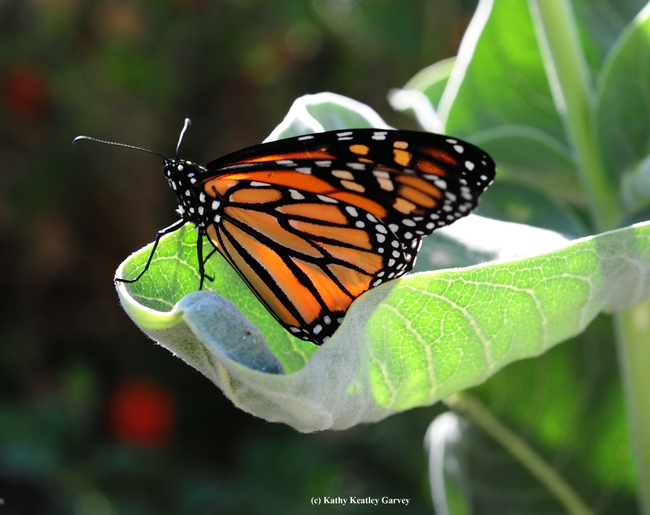
butterfly
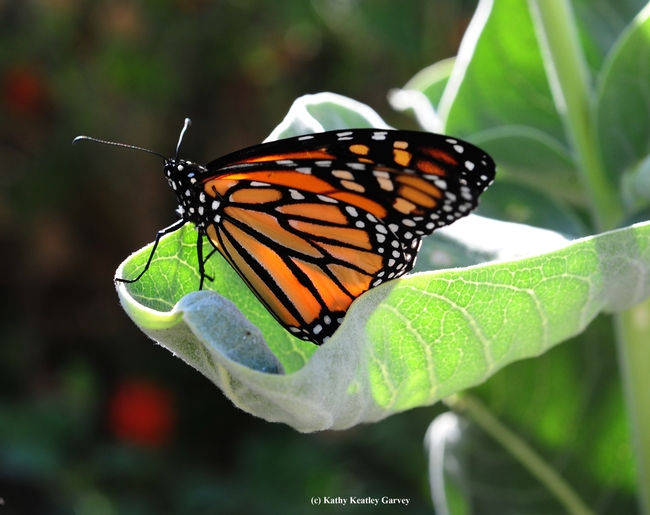
butterfly
We Are Our Own Worst Enemies
A portion of Placer County has been placed under quarantine for Asian citrus psyllid (ACP) following the detection of multiple life stages on citrus trees within the City of Lincoln.
The quarantine zone in Placer County measures 118 square miles, bordered on the north by Riosa Road; on the south by the Roseville City Limit; on the west by Brewer Road; and on the east by Fowler Road. The quarantine map for Placer County is available online at: https://www.cdfa.ca.gov/plant/acp/regulation.html#maps. Please check this link for future quarantine expansions in this county, should they occur. Quarantines in new counties will be announced separately.
This is a case where an individual moved infested trees from a quarantine zone into a clean county and ended up moving psyllid with the trees. This is how so many of our current pests are moving around - Shot Hole Borer, 1000 Cankers of Walnut, Emerald Borer, Gold Spotted Borer. On and on, we are the culprits of our own destruction. Pretty soon every pest known to plants will be everywhere. Sorry for the rant.

ACP adult and nymph
Citrus, Earwigs and Tree Wraps
Installing tree wraps on young trees provides protection to the trunk from applications of herbicides during weed management operations. Additionally, the wraps minimize light interception by trunk tissue thereby reducing sucker growth. During hot weather tree wraps provide shade to the trunk and reduce the incidence of sunburn. With the increasing incidence of earwigs, damage to young trees and the tendency for the insect to congregate under the wraps, tree wraps are being removed in some cases. Recent laboratory data from Dr. Beth Grafton-Cardwell (confirmed by observations in the field) suggests that as the season progresses adults become less and less interested in feeding on leaves (peak of feeding in March and April, declines to next to nothing by June). So, a management consideration would be to check the earwigs in the wraps in the summer, and if there are only adults present there is less concern than if there are immatures present. Another point would be to consider treatment with an insecticide such as Lorsban if wraps are to be left on for sunburn protection.
If wraps are removed a uniform coating of sun protective material should be applied to the trunk to protect against sun damage. Trunk surfaces should be monitored to ensure that a uniform coating is in place. Sun damage to unprotected trunk tissue can result in partial or complete girdling of the tree.

earwigs

earwigs 2

